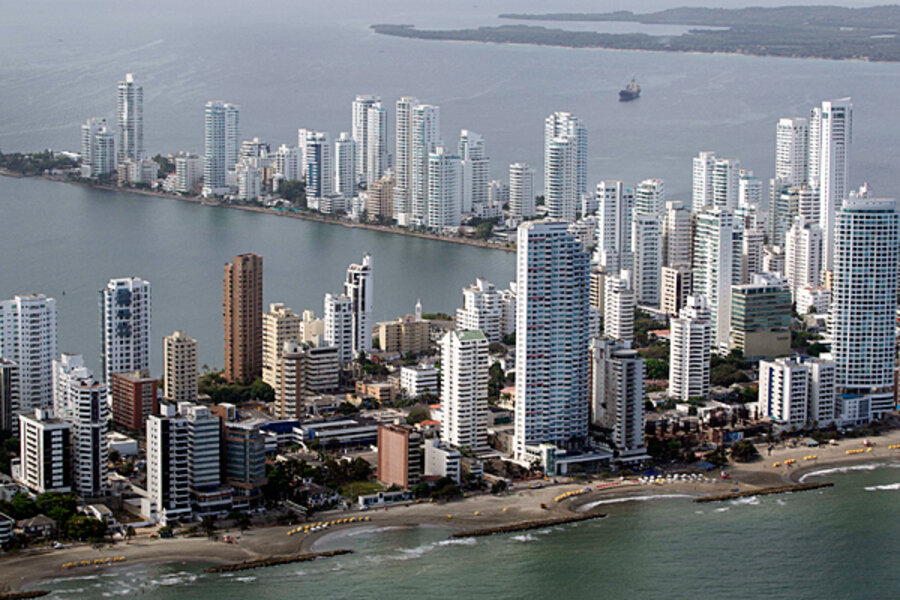How 'socially inclusive' is Latin America? New indicator ranks countries.
| Mexico City
For the past decade, Latin American politicians have centered their campaigns and policies on inclusiveness. Starting with Hugo Chavez in Venezuela, hardly any leader can seek office today – whether they're on the left, right, or smack in the center – without promising to be an advocate for the marginalized and the poor.
But with new political empowerment for the poor, expanded social programs, and continued promises of inclusion: Are people in Latin America better off today?
There are poverty and inequality statistics to measure this, but they only tell part of the story. A new indicator unveiled by the policy journal Americas Quarterly seeks to provide a fuller answer to that question by measuring “social inclusion” across 15 variables in 11 countries. The social inclusion measurement looks not just at jobs and access to goods and education, but also considers perceptions of political freedom and government efficacy.
Unfortunately Venezuela is not included in the report (nor is Argentina) because of the availability of quality data. But some of Venezuela's allies, like Bolivia and Ecuador, are listed. While these two countries fall in the middle of the pack for the cumulative ranking of overall “social inclusion,” when it comes to specific variables there are some interesting findings.
In terms of government responsiveness, Bolivia, a majority-indigenous country that elected its first indigenous president Evo Morales to office in 2005, scores among the top, at No. 2. Ecuador, with left-leaning President Rafael Correa, sits at No. 6, and by comparison, the US is at No. 11, with only Guatemala ranking behind it. Uruguay ranked No. 1.
Government responsiveness is a standard measure that, in this case, is drawn from 2010 AmericasBarometer survey data, based on the statement, “Those who govern are interested in what people like you think."
For civil society participation, Bolivia sits at the very top, and when measuring the percent of GDP spent on social programs it is No. 3. When it comes to personal empowerment, Nicaragua is at 3, with Ecuador at 5, and Bolivia at 6 (Peru, Brazil, Mexico, Guatemala, Paraguay, and Colombia all fall behind these three).
"People's sense of frustration with their government is lacking in Ecuador and Bolivia," says Christopher Sabatini, editor-in-chief of Americas Quarterly in New York. There is a high level of political participation there, and people sense the government is responding to their needs, and they sense their own power to change things, says Mr. Sabatini.
Ecuador and Bolivia's overall ranking is hurt by lower scores on measures of access to housing and formal jobs, where countries such as Chile and Uruguay are at the top. This accounts for why Chile and Uruguay score No. 1 and 2 respectively on the overall ranking. These southern cone countries also score highest on measures such as political rights and civil rights, as well as access to housing, education, and formal jobs. (The US was not included in the final ranking because data was not collected for all 15 variables.)
Brazil sits at third place on the overall ranking, but there is a notable disparity in the scores of the top two countries and the third, which means that despite its global rise, Brazil has a long way to go (as does the rest of the region).
While civil society participation is highest in Bolivia, Chile and Uruguay figure at 10 and 11 respectively (the US is at 8). These rankings might express a sense of contentment: Why protest when things are going alright? But over time a less participatory society can break down bonds of trust across groups, says Sabatini.
When the leaders of the hemisphere convene this weekend in Cartagena, Colombia for the Sixth Summit of the Americas, poverty reduction and closing the gap on inequality – one of the region's most enduring problems – will be on the agenda.
Countries can tout a lot of gain, but, says Sabatini, “while we've seen a lot of important changes in terms of economic growth, it's not time to be too self-congratulatory. There are many rights or political participation or discrimination that has to be addressed to consolidate these changes.”








